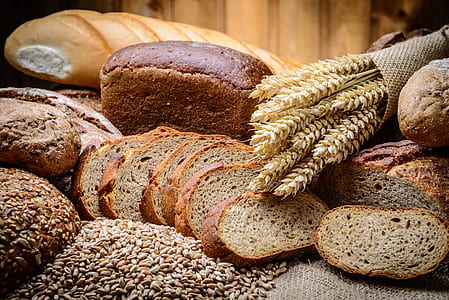Choosing the Right Flour for Every Recipe: A Guide to All-Purpose, Bread, and Specialty Flours

Flour is the backbone of baking, but with so many types available, how do you choose the right one? At Delights Bakery, we’ve learned that the secret to perfect cakes, breads, and pastries lies in understanding your flour. This baking essentials guide breaks down all-purpose flour, bread flour, and specialty flours to help you achieve bakery-worthy results every time. Whether you’re baking a fluffy cake or a chewy sourdough, our flour guide will steer you toward success. Let’s dive into the world of flour and elevate your baking tips!
Why Flour Matters
Flour isn’t just a pantry staple—it determines texture, structure, and flavor in your bakes. The protein content, grain type, and milling process affect how flour behaves in recipes. Choosing the wrong flour can lead to dense cakes or flat breads, so let’s explore the main types and their best uses.
A Personal Baking Lesson
Years ago, our head baker at Delights Bakery ruined a batch of croissants using all-purpose flour instead of bread flour. The result? Flat, chewy pastries that taught us a valuable lesson: flour matters. Since then, we’ve mastered the art of matching flours to recipes, and we’re excited to share our insights to save you from baking mishaps!
Types of Flour
Here’s a breakdown of the most common flours and their uses:
- All-Purpose Flour: Protein content (10-11%) makes it versatile for cakes, cookies, and quick breads.
- Bread Flour: Higher protein (12-14%) for strong gluten, ideal for yeast breads like sourdough.
- Cake Flour: Low protein (6-8%) for soft, tender cakes and muffins.
- Whole Wheat Flour: Nutty flavor and dense texture, great for hearty breads.
- Gluten-Free Flour: Blends of rice, almond, or tapioca flour for dietary needs.
- Specialty Flours: Almond, coconut, or rye flour for unique textures and flavors.
Flour Comparison Table
| Flour Type | Protein Content | Best Uses | Texture |
|---|---|---|---|
| All-Purpose | 10-11% | Cookies, cakes, quick breads | Balanced, medium |
| Bread | 12-14% | Sourdough, artisan breads | Chewy, structured |
| Cake | 6-8% | Cakes, muffins | Soft, tender |
| Whole Wheat | 13-14% | Whole grain breads | Dense, hearty |
| Gluten-Free | Varies | Dietary-specific baking | Varies by blend |
| Almond | Low | Gluten-free cakes, cookies | Moist, nutty |
Choosing the Right Flour
Match your flour to your recipe with these tips:
- For Fluffy Cakes: Use cake flour for a tender crumb in layer cakes or cupcakes.
- For Chewy Breads: Choose bread flour for strong gluten in sourdough or baguettes.
- For Cookies: All-purpose flour strikes a balance for soft or crispy cookies.
- For Rustic Breads: Blend whole wheat with bread flour for flavor and structure.
- For Gluten-Free: Use a 1:1 gluten-free blend or almond flour for dietary needs.
- For Specialty Bakes: Try rye for pumpernickel or coconut flour for tropical cakes.
Baking Tips
- Measure Accurately: Spoon flour into a measuring cup and level off to avoid packing.
- Check Protein Content: Look at the flour’s nutrition label for protein percentage.
- Store Properly: Keep flour in airtight containers in a cool, dry place to maintain freshness.
- Sift When Needed: Sift cake flour for lighter textures in delicate bakes.
- Blend Flours: Combine flours (e.g., all-purpose and whole wheat) for balanced flavor and texture.
Common Mistakes to Avoid
- Using Wrong Flour: Avoid all-purpose for breads needing strong gluten.
- Overpacking Flour: Scooping directly from the bag can add too much flour.
- Ignoring Freshness: Old flour can affect taste and performance.
- Skipping Sifting: Unsifted flour can lead to dense cakes.
Frequently Asked Questions
Can I Substitute All-Purpose Flour for Bread Flour?
It’s not ideal for yeast breads, as bread flour’s higher protein content creates better structure. Add 1 tbsp vital wheat gluten per cup of all-purpose flour for a closer match.
What’s the Best Flour for Cakes?
Cake flour is best for soft, tender cakes. If unavailable, mix 1 cup all-purpose flour with 2 tbsp cornstarch.
Is Gluten-Free Flour Interchangeable?
Use a 1:1 gluten-free blend for similar results, but check for xanthan gum in the mix for structure.
How Do I Store Flour?
Store in airtight containers in a cool, dry place; refrigerate specialty flours like almond for longer freshness.
Explore Our Baking Essentials!Final Thoughts
Choosing the right flour is the key to unlocking perfect bakes, from fluffy cakes to crusty breads. At Delights Bakery, we’re passionate about sharing baking essentials to help you succeed. Try these tips, experiment with different flours, and share your baking wins in the comments below—your story might inspire our next guide!

Comments
Post a Comment